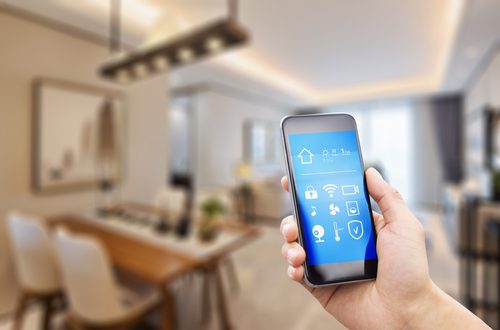Environmentalists highlight the economic and environmental benefits of sustainable properties. The built environment makes up a significant amount of Earth’s surface, and infrastructure contributes to greenhouse gas emissions through construction and operation.
Property managers can shrink their carbon footprints and utility costs by installing sustainable features. These additions may also increase a building’s eco-consumer appeal, improving profitability.
Sources of Pollution
Commercial properties contribute to the carbon footprint. Most pollution derives from ecologically degrading energy sources, such as fossil fuels. Nearly 84% of global power comes from this source.
Fuel sources release greenhouse gases into the environment during combustion and influence climate change. Over half of energy use derives from heating, ventilation and air conditioning (HVAC) systems. Water heaters, refrigerators and lights also contribute to about 27% of power consumption.
Property managers can conduct energy audits before investing in sustainable appliances. The audit will identify the primary sources of power loss. They can then apply six effective property management tips.
1. Smart Thermostats
Smart thermostats use the Internet of Things (IoT) to target HVAC emissions. The autonomous system connects to various sensors, dividing a structure into zones that monitor temperature variations and occupancy levels.
Sensors automatically heat or cool a room when they identify internal temperatures. The systems turn off in vacant properties and can also be controlled remotely through users’ cellphones.
Some systems use machine learning to adjust indoor climates for better efficiency. Over time, the technology shrinks tenants’ carbon footprints and minimizes energy costs.
2. Energy Star Appliances
Federal organizations assess the efficiency rates of appliances on the market. They ensure each device meets strict sustainability standards. Those that exceed them are awarded Energy Star certification.
All certified appliances are significantly more sustainable than other items on the market. They generally use 20% less energy compared to traditional products.
3. LED Wall Lights
Engineers developed light-emitting diode (LED) bulbs to enhance infrastructural sustainability. The lights are nearly 85% more energy-efficient than conventional incandescent bulbs. They also last longer, producing less landfill waste over time.
Property managers can place LED bulbs in outdoor wall lights to improve environmental and residential safety. Individuals may illuminate pools, fences and other potential hazards at night. Managers can also enhance biodiversity conservation with wall lights by protecting animals from fatal building collisions.
4. Sustainable Building Materials
Property managers can also create sustainable buildings using low-impact materials. Many eco-conscious builders use bamboo as a wood replacement in construction. The plant can grow nearly 3 feet in one day with few resources. It is lightweight and as strong as steel. Individuals can shrink their carbon and water footprints by building commercial structures with bamboo.
Construction professionals can also use recycled materials to enhance a property’s sustainability. They can use recycled paper insulation to reduce landfill waste and HVAC energy loss. Manufacturers treat the used paper with borate, which minimizes flammability and pest interference.
5. Cool Roofs
Cool roofs are energy efficient because they reduce overheating. Asphalt shingles’ dark coloring increases their heat production. In the summer, shingled rooftops can reach over 150 F on average.
HVAC systems consume more energy when buildings overheat. Cool roofs use light-colored, reflective materials to minimize this. This feature also minimizes utility costs and improves ecological conservation.
6. Rainwater Harvesting Systems
Property owners can develop green structures by preventing freshwater exploitation. They may install rainwater harvesting systems to decrease pollution runoff and improve resource conservation. The technology collects rain and snowmelt in conventional barrels.
Pumps transfer water directly to irrigation devices or through purification systems. Residents can use the filtered water for consumption, washing, bathing and more. They may also connect their rainwater harvesting systems to solar panels, minimizing surface-level and atmospheric pollution.
Educating Tenants on Sustainable Practices
Property managers must educate their residents about energy-efficient practices. Running HVAC systems year-round, keeping lights on and overconsuming freshwater can adversely affect local ecosystems. People that understand the impacts of their carbon and water footprint can effectively improve environmental conservation.
Individual energy audits can also help identify unsustainable actions. Over time, energy-efficient appliances and lifestyle changes can minimize harm to the environment and help properties become greener. Property managers can lead the efforts and make a difference in their commercial holdings.



